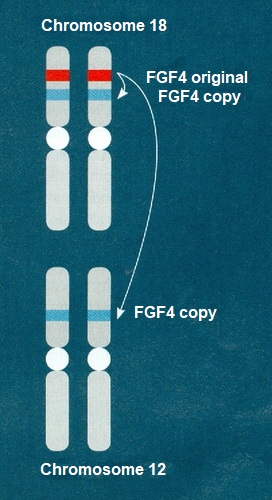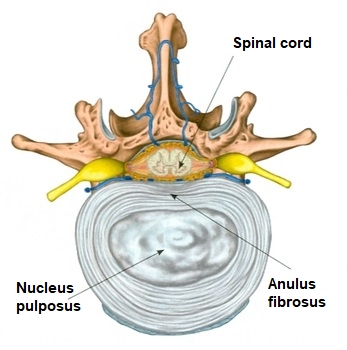The Gene Causing the Short Legs in Dogs
It's a well-known fact that dachshunds compared to other breeds have a greater risk for slipped disc. It was always believed that it was because of their long backs, but we know now that the primary cause is a degeneration of the intervertebral disc. In fact, the dachshunds don't have a long back but short legs, just like the Corgis.Their short legs are due to a special form of dwarfism. The scientific term is chondrodystrophic dwarfism which also applies to the Welsh Corgi and various other breeds. The extent of this dwarfism varies; breeds such as the French Bulldog and Beagle are equally chondrodystrophic although their legs are not quite as short.
Back in 2009, a team of scientists led by Heidi Parker from the National Human Genome Research Institute in Bethesda (Maryland) have found the genetic culprit behind the stumpy limbs of all these breeds.
All cases of stunted legs in domestic dogs are the result of a single genetic event that took place early on in their evolution. Some time ago, a gene called FGF4 (short for fibroblast growth factor 4), which plays an important role in bone growth, was copied and reinserted into a new site in the dog genome. It's this extra errant copy - a retrogene - that has retarded the growth of so many domestic breeds. Much suggests that this mutation is very old, perhaps up to 4000 years. Our ancestors probably realized that dogs with short legs could be useful and hence have preserved this feature by selective breeding.
All breeds have two copies of FGF4 on chromosome 18.
In the course of canine evolution the FGF4 gene was copied twice and reinserted into a new site. Once it was reinserted into another site on chromosome 18 and once on chromosome 12. The number of copies and the site of reinsertion exercises an influence on the length of the legs and the risk for slipped discs.
Extra copies on chromosome 18: Short legs and moderate risk for slipped disc. e.g. Cairn Terrie and West Highland Terrier. Extra copies on chromosome 12: Legs not quite so short but greater risk for slipped disc. e.g. French Bulldogs and Beagles. Extra on chromosome 18 as well as 12: Short legs and high risk for slipped disc. e.g. Dachshund and Welsh Corgi. The FGF4 gene codes a protein which is co-responsible for the regulation of growth of the long bones and which is especially present in the legs. Dogs with extra copies of FGF4 produce more of this substance and so the growth stops earlier than normal with short legs as a result. Unfortunately it turned out that it entails other changes, namely changes in the shock absorbing discs between the vertebrae. |
 |
The vertebrae of the dog consist of 7 cervical vertebrae, 13 thoratic vertebrae and 7 lumbar vertebrae. The sacral bone consists of 3 sacrum vertebrae and the tail usually has 20-30 vertebrae.
The vertebrae protect among other things the spinal cord. The intervertebral discs are spongy, doughnut shaped pads in the main joint between the vertebrae and consist of a tough outer fibrous layer and a soft jelly-like nucleus. In non-chondrodystrophic breeds the nucleus contains some molecules which can absorb water whereby they ensure that the jelly-like nucleus remains soft and flexible.

In short-legged breeds, however, the composition of the molecules in the nucleus is changed which means that the water content is reduced. Consequently the center of the disc gets stiff and inflexible - similar to modelling wax which turns hard when drying out. This change of the disc nucleus is called "degeneration".
The process begins already during the first year of the dog's life and this means that there is a greater risk for an acute slipped disc (Hansen type 1) whereby the outer layer of the disc ruptures and the nucleus is expelled. The outer layer of the disc is thinnest at the top - directly under the spinal cord. If it comes to a slipped disc the spinal cord can get damaged and can cause paralysis.
The nucleus of the discs degenerates in all dogs with this special form of dwarfism and in time they can calcify which can be seen on an X-ray. The degree of degeneration varies from dog to dog. By means of an X-ray you can count the calcified discs and get an idea of the degeneration in the respective dog. There are, however, some factors which can protect a dog from a ruptured disc. A physically strong, slim and well exercised dog has a lower risk for a slipped disc even though he has calcified discs.
Reference:
Dansk Kennel Klub "Hunden" 3/2019: Diskusprolaps hos de kortbenede racer.
https://www.nationalgeographic.com/science/phenomena/2009/07/16/the-copied-gene-that-gave-dachshunds-and-corgis-their-short-legs/
26.10.2019
